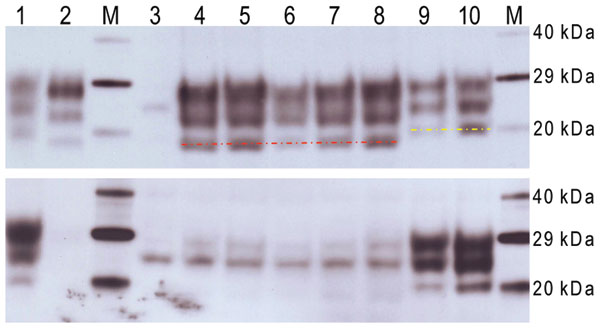Volume 17, Number 12—December 2011
Research
Isolation of Prion with BSE Properties from Farmed Goat
Figure 4

Figure 4. Western blot analysis of a range of murine transmissible spongiform encephalopathy–affected brain homogenates in host-encoded prion protein (PrP)–a (RIII) mice. A) Western blot probed with SHA31, 15-s exposure time. B) Western blot probed with 12B2, 5-min exposure time. M, biotinylated marker; lane 1, ovine scrapie field case; lane 2, bovine spongiform encephalopathy (BSE) field case; lane 3, unchallenged mouse; lane 4, bovine BSE-challenged mouse; lane 5, ovine BSE-challenged mouse; lane 6, caprine BSE-challenged mouse; lanes 7 and 8, mice challenged with suspected case; lane 9, caprine scrapie-challenged mouse; lane 10, ovine scrapie-challenged mouse. Molecular weights are indicated kDa. Red line indicates 19 kDa unglycosylated band; yellow line indicates 20 K unglycosylated band. Identical results were also obtained with C57/BL6 mice.